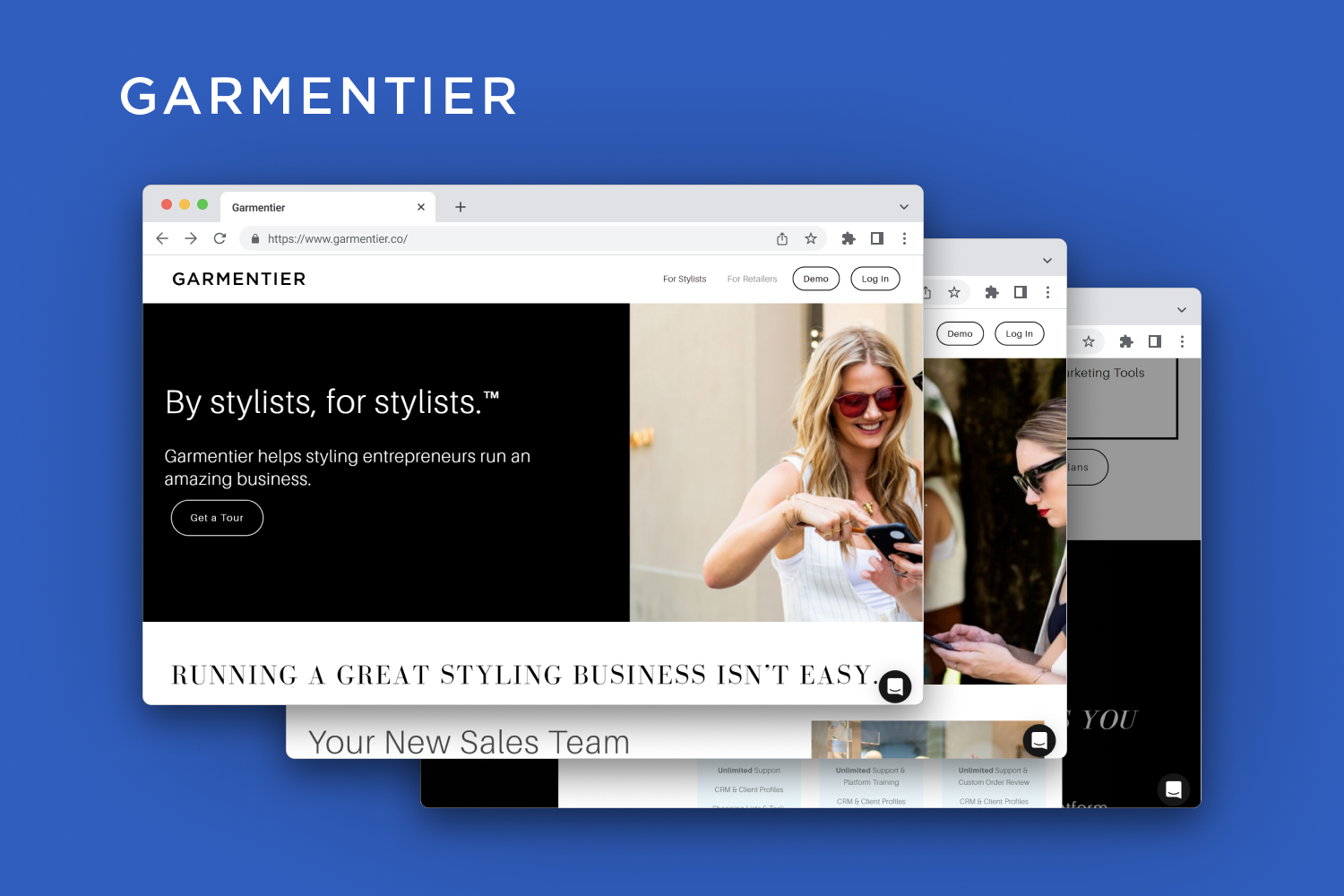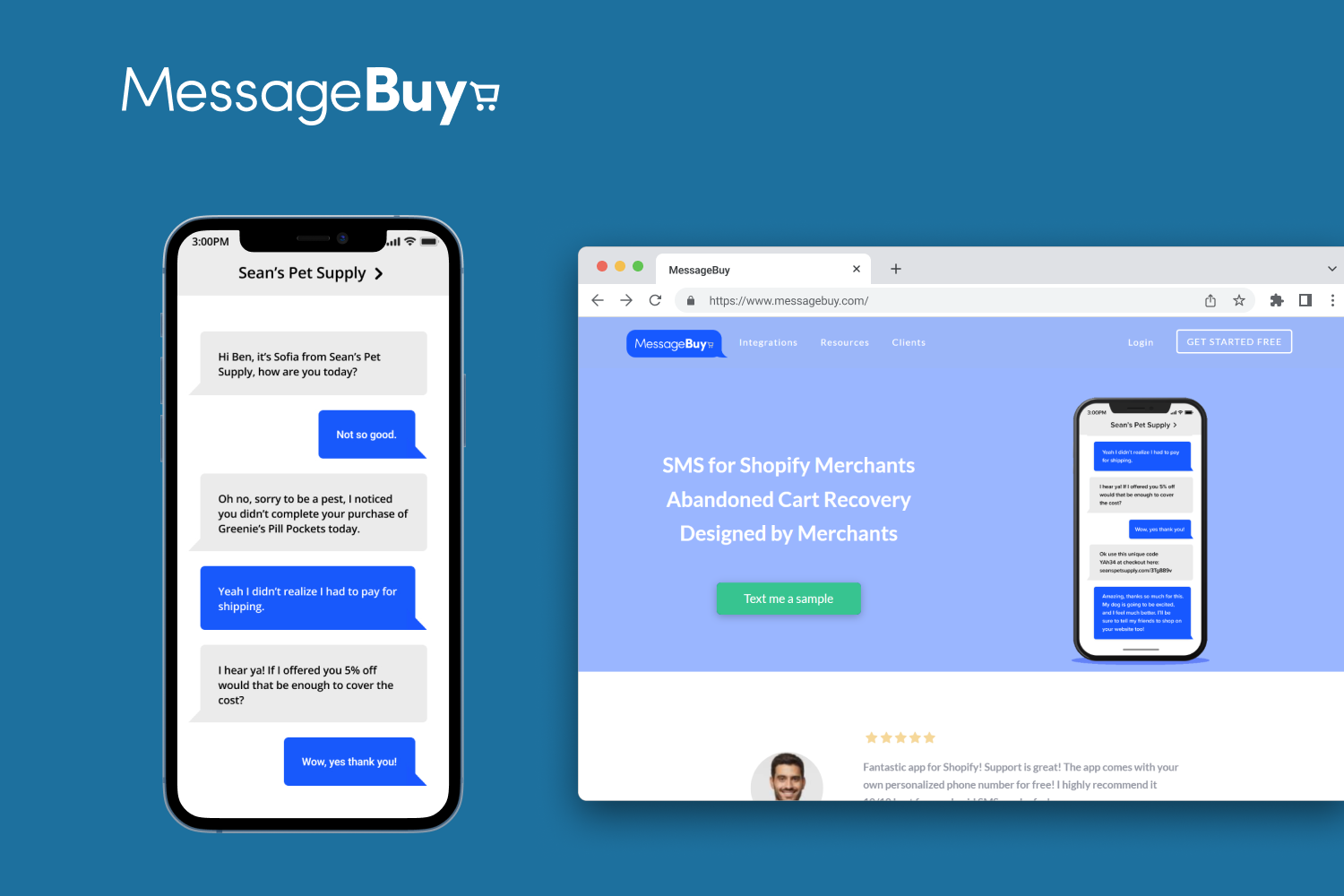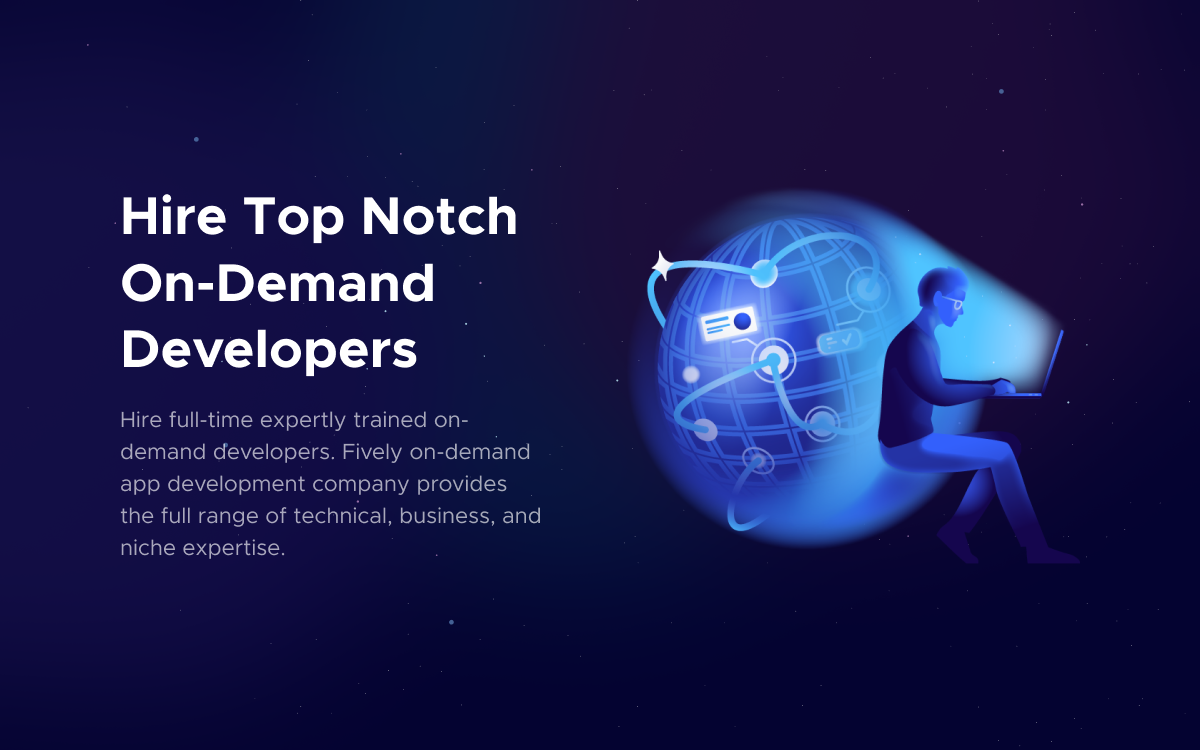How To Choose the Best Tech Stack For Startups In 2025
Discover what technologies are trending now and get recommendations from our specialists on what tech stack is better to choose for your startup development.
In the bustling world of startups, where every decision can tip the scales towards triumph or tumble, the technology stack you choose to power your business isn't just essential - it's pivotal. Imagine being a pioneer in the Gold Rush era, where the tools you carry determine the gold you unearth.

Similarly, in the startup ecosystem, the right tech stack could be your modern-day pickaxe, uncovering golden opportunities. According to research by MarketSplash, as much as 90% of all startups are built to fail! And one of the main reasons for this is being technologically outpaced.
Fively, as one of the leaders in the software development market, always follows the latest technological advancements in the field to choose the best-fitting and modern stack for our custom software apps.
Today, we’ve pulled our knowledge together in this ultimate guide to help you choose the right tools and technologies for your startup. Let's dive in together and discover how your tech choices can boost your startup growth!
What Is a Technology Stack?
At its core, a technology stack is akin to the backbone of your startup’s digital product, a combination of software tools and technologies used to build and run a web or mobile application.
Picture it like constructing a multi-storied building; every floor, from the foundation to the roof, has its distinct purpose, materials, and expertise. Each part of the tech stack has its unique role, ensuring your application stands tall, robust, and efficient. Now, let’s look closer at its layers and essential parts.
1. The Front-end Layer
Often termed the "client side", this is where users directly interact with your application, or, simply put, the user interface. This layer focuses on user experience and design. Tools and languages that dominate this realm include:
HTML: The skeleton of your webpage, providing structure.
CSS: The aesthetic essence, controlling the look and feel of the application.
JavaScript Frameworks: Like React or Angular, these are powerhouses that facilitate dynamic and interactive web experiences.
2. The Back-end Layer
Dubbed the "server side", this layer does all the behind-the-scenes heavy lifting. It’s where data processing happens, and where the application's logic lives. Key components include:
Server: Like Node.js or Apache, they handle client requests.
Database: Options like MongoDB or PostgreSQL store, retrieve, and manage data.
Languages: Programming languages such as Python, Java, or Ruby that define business logic.
3. Cloud and DevOps Tools
As businesses steer towards digital, Cloud services like AWS, Google Cloud, or Azure become the powerhouse for hosting and scaling applications. Meanwhile, DevOps tools such as Terraform, Docker, and Jenkins come into play, streamlining the development processes and fostering collaboration between the development and operations teams.
4. Tools for Quality Assurance
Quality assurance is a quintessential element. Testing tools, like DogQ for automated no-code web testing or JUnit for Java testing, ensure that every part of your application functions as intended.
5. Project Management Tools
Behind every successful application is a team that's well-coordinated. Tools like Jira, Trello, or Asana help in setting tasks, tracking progress, and ensuring timely delivery.
Together, all these layers and tools create a synergy, building an application that's robust, user-friendly, and in tune with the modern digital age. Make sure to contact us to discover your perfect stack.
Choosing a Tech Stack for Startups: the Top 8 Factors
Embarking on a startup journey is thrilling, but every decision you make, especially regarding the technology stack, can drastically impact your startup's trajectory. Choosing the right stack is akin to selecting the perfect vehicle for a long journey; you want it to be reliable, efficient, and suitable for the road ahead. Here are the top seven factors to consider:
Size and complexity of the project
A one-page website and a comprehensive e-commerce platform require vastly different technologies. Understand the scale and intricacies of your project before selecting tools. For instance, a simple website might just require HTML, CSS, and basic JavaScript. In contrast, a complex app might demand robust frameworks and databases.
In terms of new product development, especially in small businesses, when there’s a question of choosing a stack, our CEO Alexey Kalachik also recommends following the "Everything JavaScript" approach:
“Thanks to this, - he proceeds, - you can develop a POC, set up an infrastructure, get the needed investments, evaluate the market fit, and quickly check the idea's viability.”
He also adds that it’s important to remember about microservices: “Today, they are the standard of the programming industry. This approach allows you to rewrite any of the elements of the system at any time, without a threat to business.”
How the chosen tech fits your business needs
One of the most important things to remember when choosing a stack for your software project is to place your business needs first, and only then cover them with the fitting stack, and not vice versa. It’s a common mistake when startups are eager to follow a certain “fashion for techs” and decide to use some trendy tools no matter what it costs them, and in the end, it may cost them everything.
That’s why our co-founder Igor Yakutovich recommends startups use DDD methodology in choosing their tech stack:
Cost
While some technologies are open source and free, others might come with licensing costs. Factor in the direct costs of the technologies and the indirect costs, like hosting or potential future expenses if the technology is newly emerging and might change.
Quite often, both legacy and breakthrough technologies are costly to implement in your software project, as well as provide further maintenance to the ready-made app.
The legacy ones need special skills and knowledge from developers, so it can be hard to find them for a recruiter, and quite expensive for business owners to have such a specialized team on board. Plus, the maintenance costs of the ready-made legacy software are also very high.
The situation with implementing new technologies, which can be still in beta testing or just released, is similar - it’s expensive, hard, and sometimes even impossible to fix all unexpected situations that will surely happen. The difference is only 1: you have the chance that in the process of development, all the issues with this new technology will be fixed, and the maintenance costs won’t be high, but it’s quite a risky path.
There is brilliant advice our CEO Alexey Kalachik gave on choosing the startup tech stack in a recent interview: “I think that when developing your product, you should not blindly pursue trending technologies, but determine the following things for yourself:
- What business goals will the application cover?
- Do you really need to use these trending technologies?
- Do they fit into your business model?
- And also you need to estimate the amount of the respective developers' salary. It’s of crucial importance to be able to expand the team, if necessary, don’t forget about that.”
He also comments on a recent trend for using AWS everywhere it’s possible:
“Do not try to build “everything in AWS” if you are not ready to pay huge amounts of money for infrastructure. Some companies are forced to pay more than $20,000 per month for AWS due to the fact that they have high loads on individual elements of AWS, and you should include this in your budget estimations.”
Flexibility and scalability
Today's startup could be tomorrow's tech giant. Choosing scalable tools ensures you're prepared for growth. For instance, cloud solutions can be scaled up or down based on the traffic.
Integration capabilities
As your startup grows, you might need to integrate more tools, platforms, or third-party applications. Opting for technologies that support easy integrations can save you future headaches.
Qualifications of your development team
It's pivotal to match your stack with the skill set of your team. If your team has expertise in Python, it makes more sense to leverage frameworks like Django or Flask rather than forcing them into a new language.
Deployment platforms
Whether you’re planning to deploy your app on web browsers, mobile devices, or both, your deployment platform can influence your tech choices. Some technologies are better suited for the web, while others excel in mobile environments.
Time to market
Startup founders face another challenge after securing funding: time to market. The amount of time allocated for development heavily influences the choice of the stack, as certain technologies enable quicker launches while others require more time.
In the fast-paced startup world, being first can be a game-changer. Technologies that come with built-in functionalities, frameworks with extensive libraries, or platforms that support rapid development can significantly reduce your time to market.
In addition to the above-enumerated factors, always consider factors like community support, which ensures you have a collective brain to tap into for troubleshooting, and longevity to ensure that the tech isn't just a fleeting trend but has the potential for long-term relevance.
In essence, choosing a tech is about finding a balanced harmony between the present needs and future visions of your startup. It's about setting yourself up for not just immediate successes, but long-term victories.
Trendy & Popular Tech Stack in 2025
Staying current with technology trends ensures startups remain competitive and efficient. As we stand in 2025, several technology stacks are at the forefront of the tech scene. Here’s a deep dive into some of the most trendy and popular stacks, complete with their advantages and disadvantages:
LAMP Stack
+ An acronym for Linux, Apache, MySQL, and PHP/Perl/Python, LAMP is open-source, cost-effective, and comes with vast community support. It offers flexibility in terms of choosing an operating system.
- Might not be the best for highly scalable applications. PHP, while versatile, is often considered less modern than some newer languages.
Ruby on Rails (RoR)
+ Known for its simplicity and readability, RoR promotes the "convention over configuration" principle, which accelerates development. It’s perfect for startups due to its quick time-to-market.
- Performance can sometimes be an issue with larger applications. It also may not scale as easily as some other stacks.

MEAN
+ Standing for MongoDB, Express.js, AngularJS, and Node.js, MEAN is a full-stack JavaScript solution. It's uniform in terms of language and data interchange, offers high performance, and has a robust suite of tools for development.
- AngularJS has a steep learning curve. This stack might also not be ideal for compute-heavy backends.
MERN Tech
+ It’s similar to MEAN but swaps AngularJS with ReactJS. React’s component-based architecture offers more flexibility and is often considered easier to learn than Angular.
- It faces similar challenges as MEAN, especially when it comes to compute-heavy backend tasks.
.Net Stack
+ A product of Microsoft, .Net offers robustness, security, and scalability. It’s versatile – capable of building web, mobile, and desktop applications.
- Licensing costs can be a drawback. It’s also primarily tied to the Windows platform, though .Net Core has expanded its reach.
Java
+ A veteran in the tech world, Java boasts platform independence, strong memory management, and a vast ecosystem of libraries and frameworks.
- Can be slower and more resource-intensive compared to natively compiled languages. The syntax might seem verbose to developers used to more modern languages.
Python
+ Known for its clean syntax, Python has extensive libraries, particularly in AI, machine learning, and data analytics. It's versatile, being used for web development, automation, and more.
- It's an interpreted language, which can be slower than some compiled languages. Not always the best for mobile development.
Rust, Swift, and Go
With the tech realm ever-evolving, several other languages like Rust, Go, and Swift are gaining traction due to their unique features and capabilities. Always keep an ear to the ground to leverage the best of what's new and effective.
Remember, while trends offer a direction, the best tech stack for your startup will always hinge on your specific needs, team expertise, and long-term goals. The most popular stacks might not be the best fit for you, so it’s crucial to analyze and introspect before making a choice.
Best Technology Stacks for Mobile App Development
Mobile app development has taken center stage as more people spend time on their mobile devices. Choosing the right technology stack for mobile app development is pivotal to ensuring optimal performance, seamless user experience, and scalability. Let's delve into the stacks most suitable for both iOS and Android platforms.
For iOS Platform
Swift
+ Swift is Apple's programming language designed for iOS, macOS, watchOS, and tvOS. It is highly performant, and intuitive, and offers a range of modern features making app development faster and more secure.
- Being platform-specific, Swift only caters to iOS development. New updates might sometimes require code changes.
Objective-C
+ A predecessor to Swift, Objective-C has been around for decades. It offers a rich set of libraries and is very stable.
- Compared to Swift, Objective-C has a steeper learning curve and might feel dated in terms of syntax and features.
Apple Xcode
+ Xcode is the official integrated development environment (IDE) for iOS development. It’s feature-rich, offers interface builders, and allows developers to test on virtual iOS devices.
- It’s exclusive to macOS, meaning you need an Apple machine to develop with Xcode.
For Android Platform
Java
+ Historically, Java has been the go-to language for Android app development. It offers a vast ecosystem, robust libraries, and great community support.
- Some developers feel Java can be verbose, leading to more code and potential for bugs.
Kotlin
+ Kotlin is now officially supported and often recommended for Android development. It offers a more concise and expressive syntax than Java, leading to less boilerplate code and a faster development cycle.
- While rapidly growing in popularity, Kotlin still has a smaller community compared to Java.
Android Studio
+ The official IDE for Android development, Android Studio, is packed with powerful tools, and an intuitive interface builder, and supports both Java and Kotlin.
- It can be resource-intensive and might require a high-performance machine for smooth operation.
The choice between iOS and Android development, or even a cross-platform solution, will depend on your target audience and business needs. Both platforms offer robust tools and technologies. However, the key is to understand and utilize them effectively to build successful mobile applications.
Benefits of Choosing the Right Tech Stack
Embarking on a startup journey can be exhilarating, yet equally daunting, given the plethora of decisions you must make. One critical choice is the technology stack you adopt. Aligning with the right stack can be the game-changer, setting your startup on a trajectory toward success. Let's break down the pivotal benefits of making the right choice
1. Streamlined MVP Development
The journey of most startups begins with a Minimum Viable Product (MVP). The right stack ensures a smooth and efficient development process, allowing you to quickly translate your vision into a tangible product. This speed and agility can be a competitive advantage in the fast-paced startup world.
2. Talent Acquisition Becomes Easier
Aligning with popular and modern stacks makes it much simpler to attract and recruit top-tier talent. Developers are more inclined to work with current technologies that align with their skills and future-proof their career trajectories.
3. Enhanced Coding Efficiency
The right tools empower your developers to produce quality code at an accelerated pace. This boosts productivity, enabling faster iterations and quicker time-to-market.
4. Robust Framework Documentation
Comprehensive documentation can be a lifesaver for developers. It provides clarity, best practices, and troubleshooting tips. As a result, developers can write clean, bug-resistant code, ensuring that your software operates smoothly and reliably.
5. Customer Satisfaction
A stack that aligns with your business needs and the expectations of your target market paves the way for creating software that resonates with users. Happy customers translate to loyalty, referrals, and ultimately, business growth.
6. Optimized App Performance
Beyond aesthetics and functionality, the performance of your app is pivotal. The right stack ensures that your application is fast, responsive, and reliable, offering users a seamless experience, which can be a distinguishing factor in competitive markets.
In essence, your stack is the foundation upon which your startup's digital aspirations are built. A strategic and informed choice not only propels you ahead but can also mitigate potential roadblocks, ensuring your vision comes to fruition as envisioned.
Bright Examples of Modern Startup Tech Stacks
So, what are some real-world examples of using a modern tech stack that perfectly fits the company’s business strategy? Well, you can always check any of our case studies to find a fitting example for your industry or niche.
For example, Snap Patient Management Platform - here our engineers have developed a patient management platform that makes well-considered decisions based on AI algorithms using ASP.NET Core platform for the backend, JavaScript for the frontend, and Redis as a database.

Or a unique web solution for abandoned cart recovery - MessageBuy. We built an extension for Shopify MessageBuy that optimized the process of marketing and sales communication, made it fully automated in comparison with other shopping notifications services, and saved time on the information processing. It has a free trial, strong customer support, and helps to increase customer conversion rates on average by 40%.
We brought this ambitious project to life using modern technologies like AWS, Google API, Stripe API, PHP, and Shopify toolset.

If to take some world-known tech company examples, let’s look at the stack chosen by Apple, Microsoft, and OpenAI.
A champion of .NET Core for cross-platform development, Microsoft also heavily invests in Azure, its cloud computing platform, pushing forward with AI services, serverless computing, and more.
Apple leans heavily into its proprietary stack with Swift for iOS app development and Objective-C. They use Webkit for Safari browser rendering and have a plethora of in-house tools for various tasks.
Known for breaking ground in AI research, OpenAI uses a blend of popular frameworks like TensorFlow and PyTorch, which drive their advanced AI models such as GPT-4.
These giants, with their varied tech stacks, exemplify the importance of aligning technology choices with the broader vision and specific needs of an organization.
Summing up, navigating the world of startup tech stack in 2025 is akin to charting a course through an ever-evolving landscape. The choices you make regarding your stack can significantly influence your venture's success trajectory. From front-end interfaces to robust back-ends, cloud infrastructure to mobile platforms, every layer plays a crucial role.
The right stack can enhance the efficiency, performance, and scalability of your startup, making talent acquisition easier and ensuring customer satisfaction. However, the journey isn't just about choosing the trendiest tools, but rather about aligning with technologies that best fit your unique startup vision and needs.
If you’re a startup founder and need professional software development assistance or consultation, don’t hesitate to contact us via the form below - our experts are ready to ignite your business success!

Need Help With A Project?
Drop us a line, let’s arrange a discussion
Frequently Asked Questions
What tech stack do startups use?
Startups often use a combination of modern and robust technologies tailored to their specific needs. Common stacks include LAMP, MERN, MEAN, .Net, and Ruby on Rails. The choice largely depends on the startup's goals, project complexity, and the expertise of the development team.
What is the simplest tech stack?
MEAN stands for MongoDB, Express.js, AngularJS, and Node.js. It's a full-stack JavaScript solution that helps in building fast, robust, and maintainable web applications. The combination offers a complete end-to-end framework, making it popular among developers for its efficiency and streamlined nature. The LAMP stack (Linux, Apache, MySQL, PHP) is also often cited as one of the simplest and most established tech stacks. It offers a straightforward and efficient way to develop web applications using widely-adopted tools and languages.
What should be a tech stack for your startup?
Choosing the right tech stack for your startup should be based on several factors, including the project's size and complexity, budget, desired flexibility and scalability, your development team's qualifications, preferred deployment platforms, and time to market.















